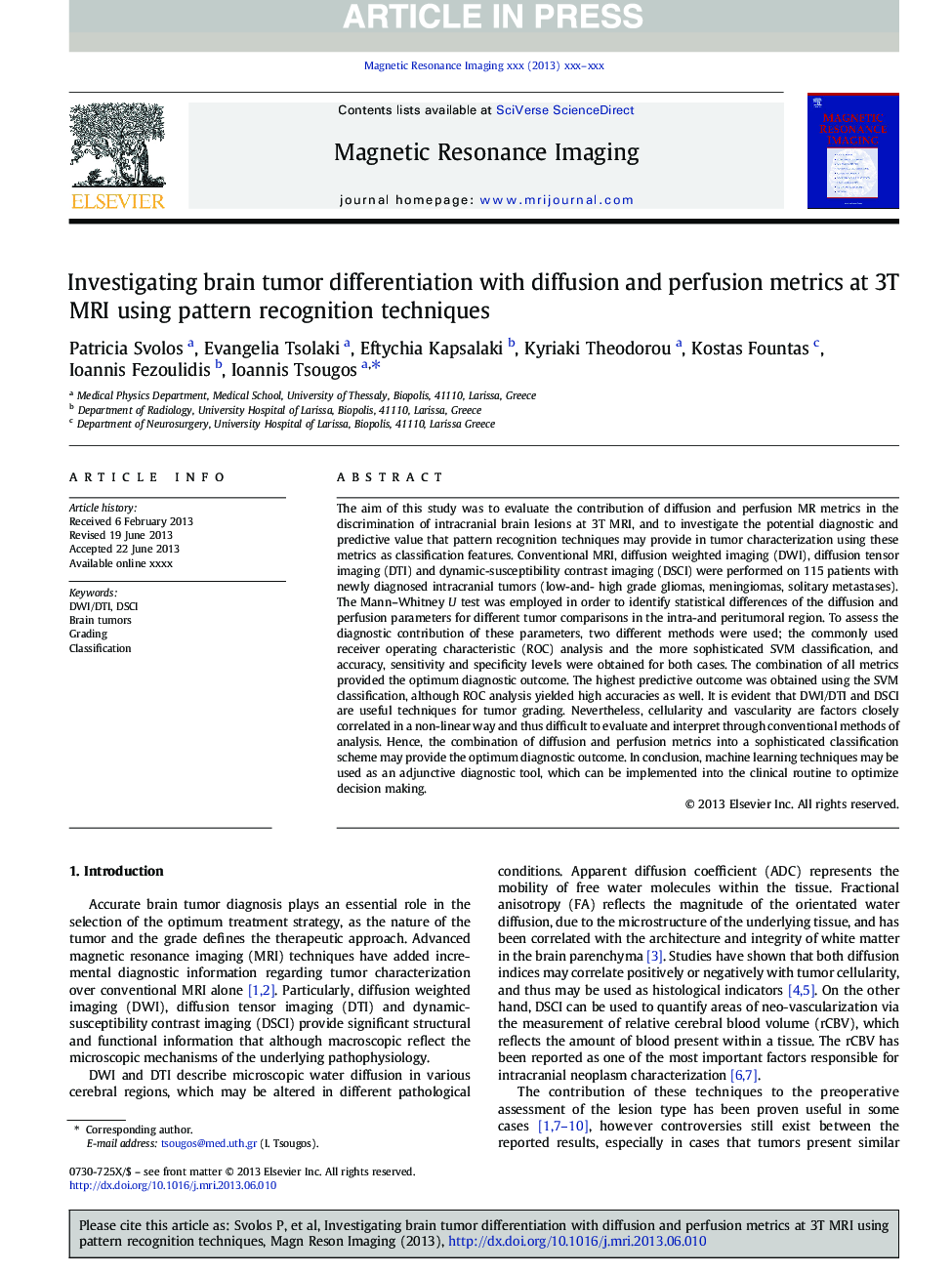| Article ID | Journal | Published Year | Pages | File Type |
|---|---|---|---|---|
| 10712653 | Magnetic Resonance Imaging | 2013 | 11 Pages |
Abstract
The aim of this study was to evaluate the contribution of diffusion and perfusion MR metrics in the discrimination of intracranial brain lesions at 3T MRI, and to investigate the potential diagnostic and predictive value that pattern recognition techniques may provide in tumor characterization using these metrics as classification features. Conventional MRI, diffusion weighted imaging (DWI), diffusion tensor imaging (DTI) and dynamic-susceptibility contrast imaging (DSCI) were performed on 115 patients with newly diagnosed intracranial tumors (low-and- high grade gliomas, meningiomas, solitary metastases). The Mann-Whitney U test was employed in order to identify statistical differences of the diffusion and perfusion parameters for different tumor comparisons in the intra-and peritumoral region. To assess the diagnostic contribution of these parameters, two different methods were used; the commonly used receiver operating characteristic (ROC) analysis and the more sophisticated SVM classification, and accuracy, sensitivity and specificity levels were obtained for both cases. The combination of all metrics provided the optimum diagnostic outcome. The highest predictive outcome was obtained using the SVM classification, although ROC analysis yielded high accuracies as well. It is evident that DWI/DTI and DSCI are useful techniques for tumor grading. Nevertheless, cellularity and vascularity are factors closely correlated in a non-linear way and thus difficult to evaluate and interpret through conventional methods of analysis. Hence, the combination of diffusion and perfusion metrics into a sophisticated classification scheme may provide the optimum diagnostic outcome. In conclusion, machine learning techniques may be used as an adjunctive diagnostic tool, which can be implemented into the clinical routine to optimize decision making.
Keywords
Related Topics
Physical Sciences and Engineering
Physics and Astronomy
Condensed Matter Physics
Authors
Patricia Svolos, Evangelia Tsolaki, Eftychia Kapsalaki, Kyriaki Theodorou, Kostas Fountas, Ioannis Fezoulidis, Ioannis Tsougos,
